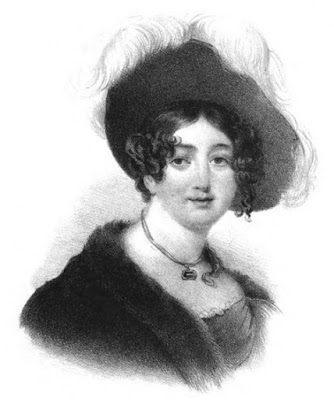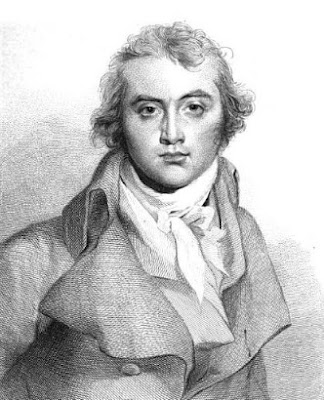We all instinctively know what a celebrity is. They’re talked about. They’re a character. They stand out from the crowd.
Arguably, celebrities are as old as humanity. There have always been those who attract the majority of attention. Bowman’s title challenges this, positioning five Regency characters as among the first true celebrities. He opens the book with almost sixty pages justifying his claim, and he makes a good case.
In simple terms, celebrity is about being known for who you are. Fame is about being known for what you’ve done. It’s also of the moment. Byron was a celebrity. The Duke of Wellington is famous.
Celebrity, argues Bowman, also requires a sophisticated media. The media is the stage on which the lives of celebrities can be paraded, discussed, ridiculed and dissected in print and in pictures. The rise of the British press in the late eighteenth century, and the freedom it enjoyed, presented new opportunities for individuals to be promoted to celebrity, and indeed, for them to promote themselves.
Celebrity involves a relationship between an individual and their audience. The public are hungry for personal details of someone’s life, and the object of their attention has to choose how much to share. Give away too much and reputation is at risk. Reveal too little and there’s a danger of being overlooked.
Bowman has selected five individuals to wear the mantle of the first celebrities. They are:
● Harriot, Duchess of St Albans
● Princess Dorothea Lieven
● Richard Grenville, Duke of Buckingham and Chandos
● Lady Charlotte Bury
● Sir Thomas Lawrence
The book tells their stories, with an emphasis on their relationship with the media and, thereby, with the public.
Bowman has clearly researched his subjects in detail, from letters, diaries, memoirs and particularly, newspapers. Their stories are engaging and entertaining, written in a style that keeps you thinking and occasionally has you reaching for the dictionary. He treats them sympathetically, even the feckless Duke of Buckingham.
Harriot, Duchess of St Albans
 |
| Harriot, Duchess of St Albans from Memoirs of Harriot, Duchess of St Albans by Mrs Cornwell Baron-Wilson (1840) |
In 1815, aged 37, she married a banker over forty years her senior. Having secured a fortune, she then achieved an aristocratic title. This came on her second marriage, this time to a man much younger than herself.
Harriot maintained her public profile through her generosity. As she and her husband travelled the country, church bells announced their arrival to excited crowds. The Brighton Patriot stated:
The liberality and benevolence of the Duchess made her presence at all times desired by all classes.1
Harriot Mellon is one of the twelve women Rachel profiled in What Regency Women Did For Us. Bowman’s book tells her fascinating story in more detail.
Princess Dorothea Lieven
The only non-British celebrity portrait shared by Bowman is that of the wife of the Russian ambassador, Count Lieven. He arrived in London, with his elegant young bride, in 1812. During his two decades in post he became a prince.
In 1834, on the news that the Tsar was withdrawing his ambassador, The Times stated:
The recall of Prince Lieven, or, rather of Madame la Princesse, is an ‘event’.2
This statement summed up how many perceived the Princess. She was effectively the ambassador for Russia, because she’d developed such close relationships with many British politicians. But she was no pawn in the male-dominated game of politics.
Rather, she entranced men into feeling so comfortable that they opened up to her, allowing her to play a significant part in the shaping of Europe once the Napoleonic wars were over.
Countess Lieven was one of the patronesses of Almack’s Assembly Rooms.
Richard Grenville, Duke of Buckingham and Chandos
Buckingham, says Bowman, gave the world something to talk about for thirty years, but achieved remarkably little. Inheriting a fortune, including the palace at Stowe, he enjoyed an annual income not far short of £100,000 a year.
His life encompassed politics, the military, mistresses and a Grand Tour in the 1820s. All this was against a background of extravagant living. His massive income wasn’t enough to support his even larger appetite for spending.
The press loved to follow the details of Buckingham’s life. Of a visit to Scotland The Edinburgh Observer stated:
Had the King himself been in the party, his motions could hardly have been more minutely dwelt on.3
Lady Charlotte Bury
Born in 1775, the young Lady Charlotte was considered the epitome of female beauty, giving her an early celebrity status. Bowman’s biography then charts her decline in status and the alteration of her celebrity, through two marriages and her transition into a novelist.
Charlotte enjoyed the confidence of royalty—the Prince Regent and his estranged wife, Princess Caroline—and mixed with the cream of society. But the high regard in which she was held was slowly stripped away over the 86 years of her long life.
Sir Thomas Lawrence
 |
| Sir Thomas Lawrence from The Life and Correspondence of Sir Thomas Lawrence by DE Williams (1831) |
Lawrence’s story, like all the others, is well presented. It describes his commitment to his work, his entanglements with the daughters of actress Sarah Siddons, and his inability to manage his finances. While the newspapers of the day were interested in what Lawrence was up to, there’s less of a sense that the public were hungry to hear it.
You can read our profile of Sir Thomas Lawrence here.
Note
All quotes are from The First Celebrities by Peter James Bowman which is available from Amberley books here.
Read a review of another of Peter James Bowman's books, The Real Persuasion
If you have enjoyed this blog and want to encourage us and help us to keep making our research freely available, please buy us a virtual cup of coffee by clicking the button below.


